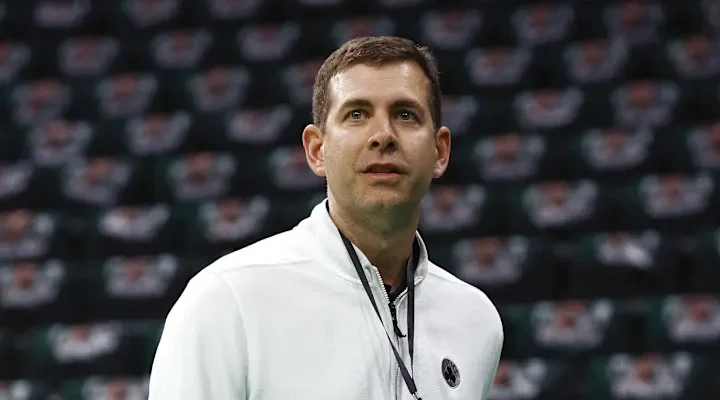Boston Celtics Engineered a Bold and Strategic Offseason Through Sweeping, Cap‑Saving Trades That Reshaped Roster and Financial Outlook
The Boston Celtics have embarked on a remarkably aggressive and tactically astute offseason, executing a flurry of trades designed not just to reshape their roster, but to fundamentally recalibrate their financial posture under the tightened constraints of the NBA’s new Collective Bargaining Agreement.
Facing a crushing burden under the second luxury‑tax apron—a threshold beyond which punishment is crippling—the Celtics took swift action to remedy their untenable fiscal position. Under the 2023 CBA, exceeding the apron imposes far more than a steep bill: teams lose access to the midlevel exception, sign-and-trade flexibility, buyout market participation, and become subject to format restrictions on trade picks and repeater tax penalties. Two of the league’s marquee teams, the Clippers and Warriors, have struggled under these limits—and Boston was rapidly inheriting their fate.
In late June 2025, the Celtics moved decisively. On June 23, they traded veteran stalwart Jrue Holiday—a key figure in their 2024 championship run—to the Portland Trail Blazers, receiving high‑scoring guard Anfernee Simons and two second‑round draft picks in return.
Holiday carried a hefty $32.4 million cap hit over the next two seasons. By swapping him—while absorbing Simons’s expiring approx‑$27.7 million deal—the Celtics reduced both salary and projected luxury tax obligations. This move alone saved Boston roughly $40 million in luxury tax payments, making the trade not just roster‑neutral but financially transformative.
Less than 24 hours later, Boston pulled off another high-impact deal. Kristaps Porzingis was sent to the Atlanta Hawks in a three-team arrangement that brought back Georges Niang and a second-round pick. Porzingis’s massive salary—over $30 million—was exchanged for Niang’s more modest $8+ million expiring contract and a pick, yielding huge luxury tax relief. Estimates suggest this deal alone saved around $220 million in projected tax outlays.
Analysts lauded the combined effect of these two deals: the Celtics not only dropped below the second apron quickly, but also reset their repeater-tax clock, regained flexibility for future moves, and avoided crippling CBA restrictions.
Underlying these choices is a strategic recognition: with Jayson Tatum sidelined recovering from an Achilles tear, the 2025–26 season can operate as a reset year—a “gap season” not for tanking, but for controlled recalibration while preserving long-term title aspirations.
The roster reshaping did not stop there. In early August, the Celtics added another layer: Georges Niang—just acquired—was traded to the Utah Jazz for rookie RJ Luis Jr. and two second‑round picks. This move slashed their luxury‑tax burden further—from $73.1 million down to $30.4 million—and positioned Boston over $10 million below the second apron.
In tandem with this trade, Boston signed veteran center Chris Boucher to bolster their frontcourt, reinforcing depth while maintaining a disciplined financial plan.
Let’s recap the offseason’s pivotal moves:
- Traded away Jrue Holiday to Portland, receiving Anfernee Simons (expiring contract) and two second-round picks, saving substantial luxury-tax dollars.
- Moved Kristaps Porzingis in a three-team trade that brought in Georges Niang and a pick, massively reducing their salary load.
- Flipped Niang to Utah for RJ Luis Jr. and future draft picks, deepening their long-term flexibility and further lowering their tax liability.
- Reinforced with Chris Boucher, adding experience to their frontcourt cheaply.
From a financial engineering perspective, the Celtics’ front office excelled. They channeled necessity—or imminent financial peril—into agile, forward-looking roster construction. Officials like former GM Bobby Marks and ESPN’s Kevin Pelton even proposed additional theoretical trades (e.g., Holiday-to-Dallas for P.J. Washington Jr., or Hauser-for-Duop Reath) that could’ve saved over $300 million and further fortified their frontcourt—but that Boston already accomplished at least part of the benefit through their actual moves.
On the court, the team is navigating uncertainty. With Tatum out, veteran leadership has departed. Still, team president Rich Gotham expressed firm confidence that the Celtics can compete effectively in 2025–26, leaning on Jaylen Brown, Derrick White, and Simons to lead the charge.
That said, speculation continues: Boston is reportedly open to dealing Anfernee Simons again—likely given that his cap hit is expiring and he offers trade value if they decide to pivot midseason. Moreover, there are murmurs about potential moves involving Sam Hauser, as Boston weighs keeping his shooting prowess against the reality of cap strain.
What’s clear throughout is this: the Celtic’s offseason was not about franchise-shaking superstars or blockbuster acquisitions. Instead, it was about deft fiscal navigation, capped by savvy trades that preserved flexibility, offloaded cost, and infused younger, cheaper assets while keeping core championship potential alive.
The Celtics delivered a masterclass in cap management and roster refitting, executing a whirlwind of trades—including Holiday, Porzingis, Niang—for short-term assets and draft flexibility. Each move was anchored by a clear purpose: drop below the second apron, reset fiscal penalties, maintain playoff viability during Tatum’s absence, and future-proof alignment for a 2026–27 title push.



